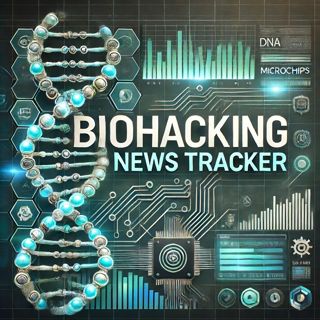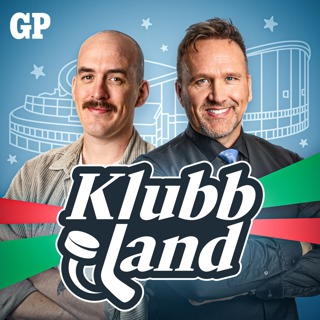
Biohacking Boom: Navigating the Changing Landscape of Tech-Driven Self-Optimization
The biohacking industry is undergoing rapid changes in the past 48 hours, with both momentum and uncertainty shaping its immediate landscape. Several major developments stand out, reflecting the sector’s agility and persistent challenges.A highlight is the surge of activity around the upcoming Biohackers World 2025 Miami conference, announced for November. This event draws global attention by promising over 50 exhibitors and expert-led sessions on breakthroughs in wearables, AI-powered health tools, personalized genomics, and longevity solutions. Title sponsors Leela Quantum Tech and The Root Brands signal a growing market emphasis on devices that monitor performance and preventive health, mirroring the industry’s pivot toward technology-centric self-optimization. The conference’s prominence underscores Miami’s emergence as a biohacking hub, with networking and deal-making anticipated to drive fresh partnerships and investment in the last quarter of the year. Compared to last year’s gatherings, there is an observed expansion in longevity-focused product lines and more active participation from established tech brands, indicating maturation in the market[1].On the product front, NAD+ boosting supplements, particularly Life Extension’s NAD+ Cell Regenerator, remain at the center of both consumer interest and controversy. Customer reviews from September highlight a divide: while some report increased focus and energy, others critique the high price and report minimal effects. Refund and shipping complaints are increasing, spurring companies to double down on transparent labeling and responsive customer service. These trends show today’s buyers are more informed and demand clear scientific evidence before investing, a notable shift from earlier years when enthusiasm often outweighed skepticism[3].Regulatory pressures are rising, particularly with the FDA’s pending decision on NMN supplement sales, now extended to September 30, 2025. This extension signals regulatory uncertainty but also gives manufacturers and retailers more time to adjust supply chains and compliance measures. Meanwhile, industry leaders are focused on safety, third-party testing, and supply chain transparency to maintain consumer trust during a period of possible disruption[2].Compared to prior quarters, the past week signals sharper consumer scrutiny, mixed with increased demand for evidence-backed, tech-enhanced biohacking products. Market leaders are responding with education campaigns and transparent customer engagement, hoping to set themselves apart as competition intensifies and regulations tighten.For great deals today, check out https://amzn.to/44ci4hQThis content was created in partnership and with the help of Artificial Intelligence AI
23 Sep 3min

Biohacking Booms: Personalized Longevity Solutions Surge in Popularity
The biohacking industry in the past 48 hours has seen strong momentum fueled by consumer demand for trackable, data-driven wellness tools and a move away from traditional “anti-aging” toward measurable longevity solutions. One of the most significant developments is Dr. Peter Attia’s official launch of Biograph’s new clinic in New York City, expanding from Silicon Valley after attracting major Silicon Valley investors and high-profile backers. Biograph offers high-end diagnostic and monitoring services, with memberships starting at $7,500 per year, appealing primarily to an affluent, results-focused market. Early reports claim over 15 percent of users have discovered urgent or life-altering insights through the company’s in-depth testing, reflecting a wider trend: consumers now want clear biomarker evidence and actionable health insights instead of general wellness promises. Investors are responding quickly, with recent funding rounds drawn from big names in technology and growth capital. At the industry level, recent summits like INNOCOS 2025 have shown major brands evolving from single-ingredient, one-size-fits-all solutions to tightly integrated systems that include supplements, wearables, personalized biomarker analysis, and lifestyle coaching. Key product launches and relaunches have centered on mitochondrial health, such as Timeline’s Mitopure-enhanced skincare and Mitolyn’s stimulant-free supplement now gaining traction for transparency and effectiveness inside the women’s wellness market. The market is responding to a shift in consumer priorities: today’s buyer is more educated, demanding full label transparency and demonstrable outcomes, with popular scrutiny on social media driving accountability for supplement brands. Price points are holding steady at the luxury end but growing competition and education have made value and ingredient clarity non-negotiable even for premium offerings. Regulatory shifts remain subtle but there is more scrutiny on claims and labeling; brands able to withstand third-party review are seeing the most trust and fastest growth. Compared to even a few months ago, leaders are moving quickly to build broader, more comprehensive health platforms that weave together diagnostics, science-driven supplementation, and daily lifestyle practices. The core difference from the previous reporting cycle is the industry’s acceleration from theoretical wellness to quantified results, responding to a culture shift as biohacking moves from niche pursuit to a mainstream, aspirational lifestyle for all demographics, not just elite early adopters.For great deals today, check out https://amzn.to/44ci4hQThis content was created in partnership and with the help of Artificial Intelligence AI
22 Sep 2min

Biohacking Booms: Wearables, Wellness Startups, and the Quest for Personalized Health Data
Biohacking, a field blending self-optimization, personal wellness tech, supplements, and data-driven health, has witnessed notable activity and acceleration over the past 48 hours. The most visible market movement is in wearables: industry analysts point to Samsung’s launch of Galaxy Watch8 as a benchmark for mainstream biohacking adoption. Its advanced tracking of sleep, activity, and environment metrics is now considered essential for both professional biohackers and casual wellness enthusiasts, reflecting the surging consumer appetite for actionable personal health data. Companies are rapidly integrating these tools with broader health platforms, driving up retail prices but also distinguishing tiered options for different buyer segments.Investment flows continue strongly. MoldCo, a Boston-based telehealth startup, just announced an $8 million seed round aimed at making mold detox routine health screening nationwide. This funding reflects confidence in preventive biohacking, particularly in environmental health. MoldCo is rolling out advanced lab testing for mold toxicity to forty-six states, on track for national coverage in 2026, and pricing monthly care at 150 to 300 dollars. The Global Wellness Institute now values the overall wellness real estate sector at 584 billion dollars, projected to reach 1.1 trillion by 2029. The inclusion of mold toxicity solutions as mainstream biohacking further drives investor interest.Supplement launches and buzz are robust, with NMNH from GenuinePurity gaining traction among longevity-focused consumers. According to a 2025 nutrition insight survey, over sixty percent of supplement buyers now prioritize “healthy aging,” and about half are willing to pay premium prices for scientifically advanced products, though pricing remains a known barrier for wider adoption.Regulatory actions in the past week have focused on transparency and safety, particularly around “anti-aging” claims. Calls for increased objective labeling and human trials, especially for newer supplements, are widespread, reflecting a market demanding credibility not just hype.Consumer behavior points to increasing sophistication: word-of-mouth and influencer reviews matter, but buyers—especially younger, educated urbanites—demand clinical data, peer-tested outcomes, and post-purchase support. Leaders in the space are responding with expanded product education, clearer trial disclosures, and tiered pricing to retain trust under rising scrutiny.Compared to previous reporting, this week signals a maturation of biohacking, with smarter tech, larger investments, and a shift toward accessible, science-backed health optimization, albeit with ongoing affordability challenges.For great deals today, check out https://amzn.to/44ci4hQThis content was created in partnership and with the help of Artificial Intelligence AI
19 Sep 2min

Biohacking Goes Mainstream: Longevity, Supplements, and Pharma Advancements Shaping the Industry
The biohacking industry has experienced a notable surge in activity over the past 48 hours, driven by new product launches, regulatory scrutiny, and shifting consumer expectations. Longevity solutions are now firmly mainstream, backed by major players like L’Oréal and Estée Lauder pivoting heavily toward biohacking-inspired skincare offerings. L’Oréal, for example, introduced the Lancôme Absolue Longevity Soft Cream and Vichy Laboratories released Neovadiol Longevity Cream, both targeting cellular aging through potent ingredients like rose DNA PDRN[1]. Online conversation around wellness in beauty jumped 16 percent in 2024 versus last year, but the past week’s brand launches have accelerated discourse: PDRN was mentioned nearly five times more in August 2025 than in all of 2024[1]. Luxury labels like Guerlain and Sisley Paris rolled out high-end serums, signaling biohacking’s move beyond niche audiences.The supplement sector also saw double-digit annual growth in NAD+ products, but now faces strong complaints about pricing, as top products like Primal NAD+ cost nearly $45 per month, prompting affordability concerns[5]. Consumers are split: some seek immediate boosts in energy and focus, while others use supplements as long-term bets on healthy aging[5]. As a result, supplement firms are expanding education campaigns and partnerships but also confronting pushback about supply chain costs and consumer access gaps.In pharma-driven biohacking, companies like Almirall and UCB set a new pace at this week’s European Academy of Dermatology and Venereology Congress. Almirall’s POSITIVE study moved the conversation from symptom relief to holistic well-being, using the WHO-5 Well-Being Index in clinical trials[3]. UCB’s bimekizumab showed durable results in chronic skin conditions, and novel treatments for conditions like atopic dermatitis and hidradenitis suppurativa also advanced through regulatory milestones[6].Compared to earlier periods, the biohacking industry is no longer defined by niche startups; legacy names now lead with R&D spending and global distribution deals. Regulatory involvement and consumer complaints have increased, particularly regarding pricing and product accessibility[2][5]. The convergence of skincare, supplements, and pharmaceuticals is rapidly driving biohacking toward the mainstream, with consumer demand shifting to favor holistic, science-backed, and age-diverse solutions over short-term fixes.For great deals today, check out https://amzn.to/44ci4hQThis content was created in partnership and with the help of Artificial Intelligence AI
18 Sep 3min

The Biohacking Revolution: Disrupting Dental Health and Sensory Optimization
In the past 48 hours the biohacking industry has shown sustained energy across wellness, tech, and consumer segments, with several new product launches and notable shifts in consumer focus. Biohacking has moved beyond its roots in longevity and nootropics; it increasingly merges with mainstream health, beauty, and holistic wellness. A standout example is the launch of ProvaDent, a next-generation oral probiotic released in September 2025 that is being called disruptive for its microbiome-centric approach to dental health. ProvaDent has registered over 103000 verified customers in under a week with social media testimonials praising its effects not just on fresh breath but also on cavity reversal and immune function, demonstrating a real-time swell in consumer enthusiasm for scientifically-backed, noninvasive solutions targeting root causes rather than symptoms. This comes as EchoXen, a sensory-optimization supplement, gained traction with its plant-centered formula and direct-to-consumer pricing strategy, offering a single bottle at 69 USD and multi-bottle discounts plus a 60-day money-back guarantee. These strategies reflect a current trend: consumers, increasingly price sensitive and skeptical of mass-market claims, now favor clinically validated products with authentic customer testimonials and refund guarantees.Luxury partnerships are also emerging as drivers of wellness tourism, exemplified by Park Hyatt Maldives hosting holistic healer Dr. Jyoti Kodwani for a month-long residency focused on biohacking-based therapies that blend neuroscience with ancient healing. Such partnerships blur the lines between lifestyle, technology, and healing arts, signaling a shift to more immersive, high-touch consumer experiences.New competitors in the sector include firms leveraging holistic protocols and AI for personalization. There is also early movement in regulatory scrutiny focused on product claims and counterfeit prevention, triggered by the dramatic sales curves of oral and sensory supplements. Industry leaders are responding through increased transparency about product sourcing, independent clinical validation, and prominent money-back guarantees in marketing campaigns. Supply chains appear stable for now, though manufacturers are investing in traceability to prevent knockoff products.Compared to last quarter, the industry is more consumer-centered, innovation-driven, and wary of regulatory oversight. Price competition is rising as a result, with customer expectations for proof of efficacy and ethical claims at an all-time high.For great deals today, check out https://amzn.to/44ci4hQThis content was created in partnership and with the help of Artificial Intelligence AI
15 Sep 2min

Biohacking Boom: FDA Approvals, Market Growth, and Innovative Wellness Tech
The biohacking industry has seen a burst of recent activity, marked by regulatory milestones, product launches, and robust market expansion since early September 2025. In the last 48 hours, key developments include the FDA’s approval of Obagi Medical’s saypha MagIQ, its first injectable filler. This move positions Obagi, previously focused on topical skin health, to double its U.S. addressable market to about 4.2 billion dollars by 2029. The product connects Obagi to the expanding medical aesthetics field and is expected to launch in 2026, solidifying its place as a leading full-spectrum brand in the industry.Simultaneously, Dermalogica secured FDA clearance for its PRO Pen Microneedling System, a class II medical device set to drive the company’s continued expansion into medical spas. Dermalogica already trains more than 100,000 professionals annually and distributes in over 80 countries, signaling a shift towards regulated, physician-supported biohacking tools. The backing of its parent Unilever further validates the mainstream acceptance and rapid scaling of such devices.Consumer appetite for health and wellness gadgets remains strong. The global market is now projected to grow at nearly 10 percent a year from 2025 according to market intelligence, with health coach services valued at 18.8 billion dollars this year and on track to reach 30.7 billion dollars by 2032. This surge reflects ongoing consumer demand for personalized, data-driven interventions, and a willingness to spend on products that blend wellness, technology, and medical oversight.In the product arena, new entries such as retinal-based skin formulas have demonstrated through fresh clinical trials their safety and potential to outperform prior solutions, especially for sensitive skin. Such innovations point to a focus on deeper efficacy, faster results, and fewer side effects, shifting market expectations towards not just enhancement but tolerability and broad accessibility.Regulatory activity has picked up, with the FDA granting more medical device approvals, signaling a transition from loosely regulated supplements toward stricter medical-grade standards. No major supply chain disruptions or price volatility have been reported this week, with brands showing resilience by leveraging established distribution networks.Compared to reports from only months ago, the biohacking sector is growing more professionalized, with greater integration of clinical research, robust regulation, and strong market optimism reflected in recent billion-dollar projections. Industry leaders are responding by investing in R and D, expanding training, and diversifying their clinical product portfolios to maintain market leadership in an environment driven by both scientific progress and consumer enthusiasm.For great deals today, check out https://amzn.to/44ci4hQThis content was created in partnership and with the help of Artificial Intelligence AI
11 Sep 3min

Biohacking Trends: Holistic Wellness, Regulatory Shifts, and Strategic Innovations
The biohacking industry has seen significant activity and strategic shifts in the past 48 hours, signaling both continued momentum and new challenges for market leaders and emerging players. Major industry names like LifeVantage are under investor scrutiny ahead of pivotal earnings announcements set for September 4, 2025. The company’s performance is expected to reveal its ability to adapt to evolving biohacking trends and consumer preferences, particularly in the area of personalized, science-driven health solutions. Stakeholders are keenly watching not only revenue trends but also the company’s handling of international sales, marketing effectiveness, and operational efficiencies.On the product front, HigherDose has expanded its offering with the launch of the Full Body Red Light Mat, extending therapeutic red and near-infrared light treatments from targeted devices to complete body immersion. This product responds to sharply rising consumer demand for home-based wellness tech that aligns with holistic self-care routines, a trend now overtaking single-solution approaches. Industry data from the American Society of Plastic Surgeons indicates that demand for minimally invasive aesthetic procedures, especially in the 40 to 54 age group, remains robust with a 46 percent rise in interest in dermal fillers over the last two years. Similarly, demand for advanced biohacking products like genetic testing and personalized supplements continues to climb.Consumer behavior is shifting rapidly, with a move away from quick fixes toward comprehensive, preventive, and long-term health management. Biohacking is now seen as part of a broader wellness lifestyle, blending traditional practices with cutting-edge technology. Leaders in the industry are pairing high-tech innovations with ancient wellness rituals, fostering a market where prevention, balance, and inner health are prioritized over immediate cosmetic results.There are also no new reported regulatory disruptions in the last week, though increased inspections and safety campaigns, such as Allergan’s recent initiative on hyaluronic acid fillers, are reinforcing a market environment focused on consumer safety and informed choice. Compared to prior quarters, consumer spending appears resilient despite economic uncertainties, with biohacking products increasingly positioned as investments in health longevity rather than luxury items.Industry leaders are responding to challenges and rising competition with strategic product launches, educational campaigns, and a focus on supply chain stability. Supply chains, particularly for devices reliant on global materials, remain stable, with recent EU trade agreements aimed at securing critical resources for health tech manufacturing. All signals suggest continued growth for the biohacking industry, albeit with a sharper focus on holistic wellness and robust regulatory compliance.For great deals today, check out https://amzn.to/44ci4hQThis content was created in partnership and with the help of Artificial Intelligence AI
4 Sep 3min

The Biohacking Boom Balancing Innovation and Ethics
The biohacking industry is experiencing rapid transformation and renewed public attention in early September 2025, with notable shifts in technology, access, and consumer demand. One of the most significant trends this week is a surge of innovation and investment in the cryotherapy segment. Latest data show the global cryotherapy device market was valued at 2.93 billion dollars in 2024 and is forecast to reach 4.28 billion by 2030, growing at a healthy compounded annual growth rate of 6.52 percent. The market has seen a clear pivot toward electric and gas-free cryo systems, which address safety and logistical challenges of liquid nitrogen devices. Demand is also rising for mobile, portable cryotherapy units, appealing to wellness centers, home users, and athletic facilities seeking accessible recovery technology. Integration of artificial intelligence and machine learning in cryotherapy devices is enabling real-time monitoring and personalized treatment protocols, a trend reflecting consumer expectations for data-driven and highly customized health solutions[1].In longevity and regenerative medicine, the conversation is dominated by high-profile industry figures like Bryan Johnson and a wave of elite retreats such as Longevity Island. These programs focus on advanced and sometimes controversial interventions like stem cell therapies and gene editing, which are available predominantly to wealthy consumers. This exclusivity is prompting growing concerns around ethical oversight and calls for new regulatory guardrails as treatments become more globally accessible. Some industry participants believe that the current focus on premium services may soon shift as research funded by this elite demand is gradually democratized[2].Consumer trends also reveal a strong movement toward holistic and functional wellness, with products like barefoot or grounding footwear entering the mainstream. Grounded Footwear, for example, has driven a cultural wave that prioritizes posture support and natural energy flow, illustrating the industry’s expanding intersection with everyday lifestyle products. Online conversations and social media trends highlight a desire for authenticity and transparency in biohacking-related offerings[4].Comparatively, these developments represent a broader push toward advanced medical innovation and greater consumer empowerment versus last year, which saw more fragmented and niche applications. Major leaders in the biohacking sector are responding by investing in smart technology, new delivery models, and public education to combat misinformation and address ethical debates. Overall, the industry is balancing rapid technological advancements with regulatory, ethical, and supply chain questions, shaping a landscape that is more inclusive but increasingly complex[1][2][4].For great deals today, check out https://amzn.to/44ci4hQThis content was created in partnership and with the help of Artificial Intelligence AI
3 Sep 3min





















